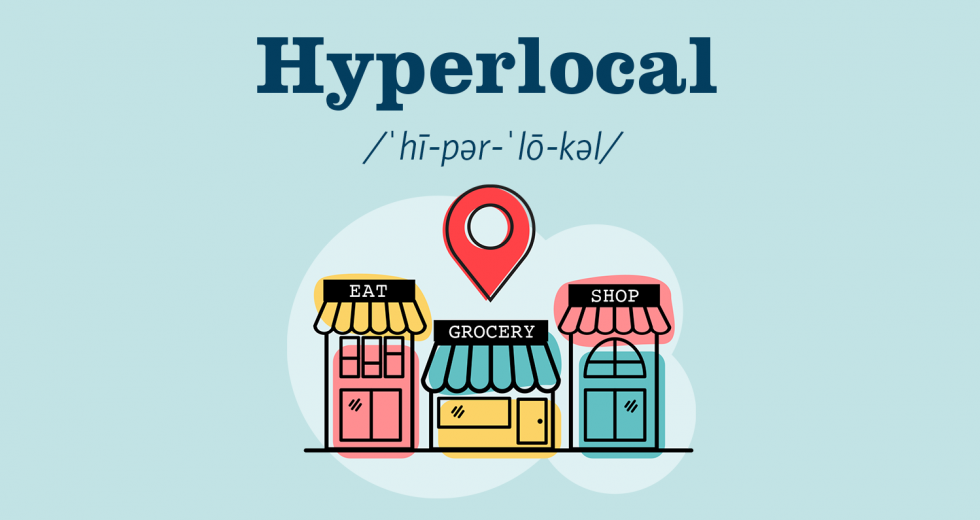/ˈhī-pər-ˈlō-kəl/
Eating local, shopping local and advertising local are all trending for a reason — being “hyperlocal” is all about connecting with one’s community. The term relates to all matters concerning a well-defined community, but most often it’s about engaging the audience within a business’s immediate vicinity. The concept of reaching a broad audience can be effective for, well, obtaining or distributing broad information, but getting super specific or hyperlocal can make for more meaningful consumer connections.
The term has been used to describe focused, localized media coverage in journalistic circles since the late 1980s, but, given our current culture’s obsession with making everything smaller and more personalized, it’s no surprise that it’s extending to marketing and beyond.
The Buzz
N’Gina Guyton-Kavookjian knows a thing or two about hyperlocal living. She and her husband, Ian Kavookjian, co-own the Southern-food restaurant South and The Quinn vintage boutique, both in the Southside Park neighborhood in downtown Sacramento. Residing just blocks from their businesses — and soon sourcing their restaurant ingredients from a recently purchased Sacramento farm — the couple lives and breathes a hyperlocal lifestyle.
According to Guyton-Kavookjian, there’s a mindful approach to hyperlocalism, and there’s an indifferent approach. The way she shapes her business, intentionality and mindfulness of who the restaurant serves is paramount. “The location of South is in a very diversified neighborhood — we have the Muslim community that butts up against the Latino community, Little Japan, the Mandarin community. … So it’s super important to make sure, for example, that for our Muslim community, not all of our items contain pork.”
A focus on the hyperlocal can mean sacrificing a larger audience. “We are not focused on anybody that is outside of Sacramento. We’re really focused on the people who live here,” she says.
The Word
Connecting with one’s neighbors spreads across formats and industries. For example, if opening a business in a tight-knit neighborhood, placing hyperlocal ads to serve the audience in a considerate, authentic way makes for a deeper connection — it’s all about the customer relationship and reciprocal support. “We’re out in front of our restaurant in the morning, like leaf-blowing and having conversations with the neighbors, kind of that old-school relationship-building,” Guyton-Kavookjian says.
And when a small business focuses on an authentic hyperlocal approach, sometimes advertising isn’t needed. “We’ve never placed an ad,” Guyton-Kavookjian says. The eatery focuses on crafting an organic Instagram presence with messaging that speaks the same approachable language as its cuisine.
Guyton-Kavookjian warns against casting too wide a net to try to please everyone. “Your brand gets diluted. And then in the end, it’s like, ‘Who the hell are you doing it for?’”
Recommended For You

Buzzwords: Design Thinking
A methodology that provides a solution-based approach to solving problems.
Various iterations of “design thinking” have come into play over the years, but the process as we currently know it consists of five steps: empathize, define, ideate, prototype and test.

Buzzwords: Activation
The art of driving consumer action through brand interaction and experiences
For advertising to be effective and resonate with its intended audience, it must strike an emotional chord. Activations take this one step further by immersing the consumer in an experience that’s often sensorial or physical.



